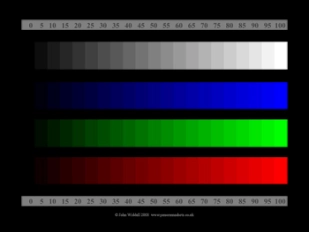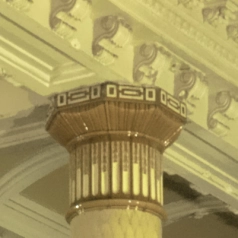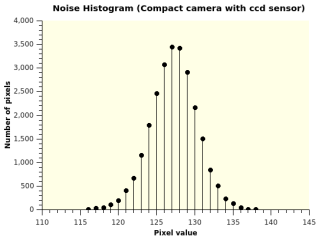Articles and Tutorials on Photography by John Widdall
What started life as a website about panorama shots now covers a much wider range of subjects. My preference is for FOSS (Free, libre, Open Source Software) running on Ubuntu or Linux Mint, but users of proprietary operating systems and software should find the articles equally useful. Most are on subjects such as Monitor Adjustment where the principles are the same and much of the software mentioned here is also available for Windows and Mac.
Recent and Featured Technical Articles
Test Cards for Monitor Adjustment

How often at photographic club meetings do we hear the comment “It doesn’t look like that on my monitor” when an image is projected? Obviously the fault could be with the projection system or with the monitor (i.e. computer and monitor), or both! Before making any adjustments, you may wish to view the test cards shown here to see just “how far out” your system is.
Which Raw Processor? and Which Demosaicing Method?

Published in January 2014, Which Raw Processor? compares RawTherapee, Darktable, Lightzone and Photivo. With the exception of Darktable, which is not yet available for Windows, all of the applications are available for Windows, Mac and Linux.
Published in February 2014, Which Demosaicing Method? compares the nine alternatives offered by RawTherapee and Photivo, and the two offered by Darktable.
How to measure the focal length of a lens
Your zoom lens may have a focal length range of 28-200mm and a focusing range from perhaps 0.5m to infinity. But you probably do not have the full range of focal lengths available when focused fairly close e.g. 4m. This article explains how to measure the focal length based on the subject distance and magnification.
How the Nature of Light affects the performance of digital cameras
Light as waves – diffraction blur

Photographers are aware that reducing the aperture beyond a certain point introduces a blurring of the image due to diffraction. This becomes significant at a certain f-number whatever the focal length of the lens. A simple rule-of-thumb is established for determining the “diffraction limited f-number” by relating this to pixel pitch on the sensor. Read the full article
Light as particles – photon noise
In the second of two articles I look at another natural phenomenon, photon noise (also known as Shot noise). As with diffraction blur, the problem becomes more serious as the physical size of the sensor is reduced. Read the full article
Noise in Digital Camera Raw Files – How to Measure it
This article explains how to measure noise using free software. As well as presenting graphs of the measurements I have attempted to explain the results from physical principles – and evidently the noise is predominantly photon noise (aka shot noise). Different cameras, ccd vs cmos, and different processing methods are compared. Read the full article
Panoramic Photography

Panoramic photography is as old as photography itself. Stitched panoramas were being produced during the American civil war in 1864. Many specialised film cameras were produced over the years and more recently specialised digital cameras have appeared. Read the full article
Avoiding Parallax Problems by use of a Panoramic Head
Avoiding Parallax Problems explains the problem, a Simple Panoramic Head is the solution. A simple rule of thumb is given to indicate when a panoramic head should be used.
You can contact me with comments or questions: john at panoramashots dot co dot uk
